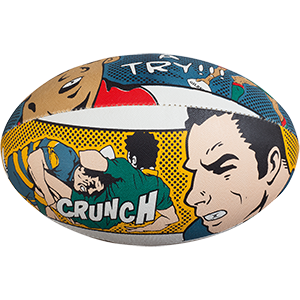 One of my abiding memories as a fight fan was stepping into a camera shop in Benoni in the early 1980s and being mesmerised by a fight on the overhead television.
One of my abiding memories as a fight fan was stepping into a camera shop in Benoni in the early 1980s and being mesmerised by a fight on the overhead television.
It was Marvin Hagler against Roberto Duran for the world middleweight championship. Caesars Palace. Las Vegas. Bright lights. The whole number.
Only years later did I realise that our own Stan Christodoulou was the third man in the ring that night, keeping watch on the two most savage fighters in the division.
I couldn’t take my eyes off Hagler. All rippling muscle and bad intentions, he looked every inch like a monster on the rampage.
Duran was different. “Some guys try to create an image by acting like an animal,” the boxing publicist Bobby Goodman once said of him. “Not Duran. He actually was a fucking beast.”
I would only come to appreciate Duran’s warrior spirit some years later. Hagler was the fighter I fell in love with.
I followed the trajectory of his career with great interest and celebrated when he destroyed Tommy Hearns in their classic brawl two years later. For sheer ferocity, only Mike Tyson in his prime comes close.
They say you should never meet your heroes, but I did anyway. Hagler was prickly when he visited South Africa two decades ago and he was miserable when I met him in Europe again two years ago. I don’t know what I was expecting, but my admiration fast turned to ambivalence. I would always admire Hagler as a fighter, but he’s come down a notch or three in my estimation.
I have a new man crush. He also happens to be the world middleweight champion.
Gennady “GGG” Golovkin holds a variety of championships, but the one I rate most is the one you can’t hold up: acclaim as the most thrilling boxer in the sport.

GGG . . . all power, all fury.
There are tons of fighters who are exciting to watch, but none combine violence and skill quite as well as Golovkin. He’s from Kazakhstan and fits the Eastern European stereotype of being cold and sullen and robotic. Except he isn’t.
His English is fine, he has a dry line in good humour and he entertains as few other fighters do. And unlike the morose Hagler, he’s a fantastic bloke who always has time for his fans and the media. No smacktalk or nonsense ever passes his lips.
Golovkin comes from a harrowing background – his soldier brothers were both killed while serving in the military – and finds his refuge in the ring.
There’s much to like about him. Despite being small by middleweight standards, he extracts great power from his body, the torque and timing of his punches making him the most destructive middleweight in boxing history.
Almost all his finishes end up on the highlights reel. He’s that dramatic, and always ends with his trademark sneer. He looks at his beaten challengers with disdain, as if to say, is that all you got?
Hagler could punch, but nothing like Golovkin, who last went the distance seven years ago. Thirty of his 33 fights have ended inside the distance.

The GGG we know and love – in brutal mood.
The division may not be as talent-laded as it was in the 1980s, but the measure of any boxer is how well he does with what is placed in front of him. Golovkin carries no-one. The shirkers are bombed out quickly; the better opponents suck up his slow poison, but he gets them in the end.
He also ducks no-one. He’s even called out Floyd Mayweather jr, but the 38-year-old isn’t willing to taint his legacy against a big banger like Golovkin.
The Kazakh’s power is crazy, but his general skills are underrated. He enjoyed a 300-fight amateur career, suffering just a handful of defeats, and has never been knocked down. He can box if he must.
Typically, once into his stride, he plants his feet and digs away to both head and body. His chin is so solid, he’s happy to trade and take his chances. No-one has come remotely close to beating him in the nine years he’s been a pro.
Some are predicting David Lemieux will be the first to do so when the pair meet at Madison Square Garden this weekend (live on SuperSport from 3am on Sunday). The Canadian is a puncher and likes a good tear-up. If it’s true that Golovkin hasn’t fought anyone of his power (31 KOs in 34 wins), it’s equally true that Lemieux has never fought an opponent of Golovkin’s class. He’s about to find that out in the most painful way.
Lemieux is promoted by Oscar De La Hoya, who is telling anyone who will listen that his man is about to stop the Golovkin freight train. To be fair, De La Hoya has to peddle that line in BS. Few of the big players in boxing really believe it.
I’m expecting an explosive fight, perhaps even in the manner of Hagler-Hearns, with much the same conclusion. Lemieux will have his moments, but he’ll be made to pay in the most crushing way for going to war with the man boasting the most savage fists in boxing.
Go on, see for yourself.

Catching up with boxing’s No 1 in Monte Carlo in 2014.
 Reading and hearing some of the guff out there, it seems all the Springboks have to do is rock up at Twickenham on Saturday and flick Wales aside to advance to the last four of the World Cup.
Reading and hearing some of the guff out there, it seems all the Springboks have to do is rock up at Twickenham on Saturday and flick Wales aside to advance to the last four of the World Cup.


















